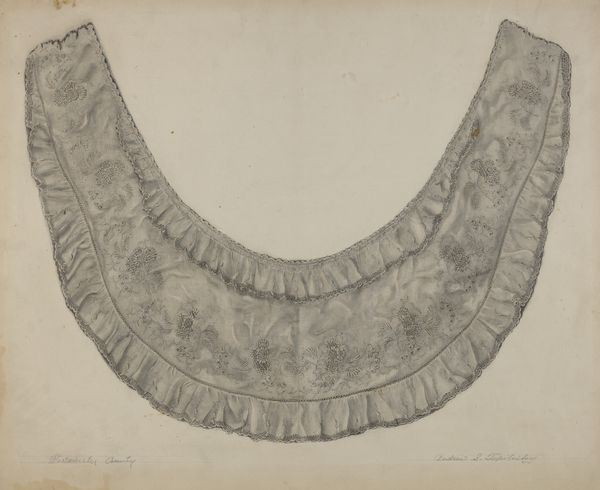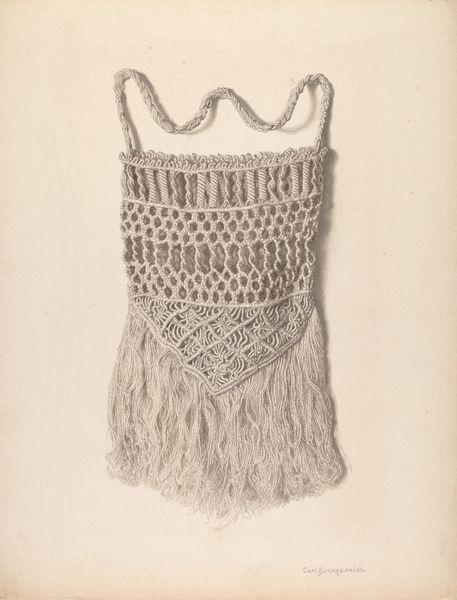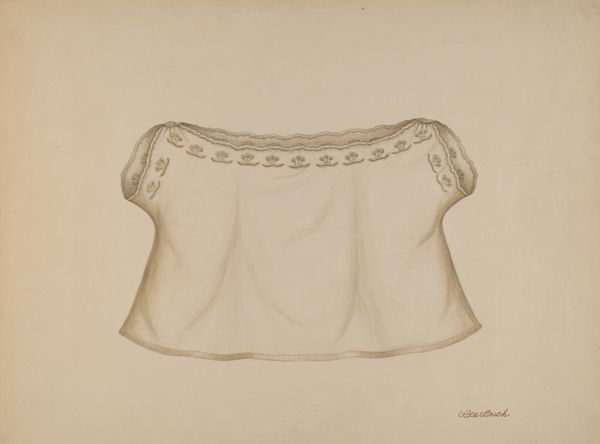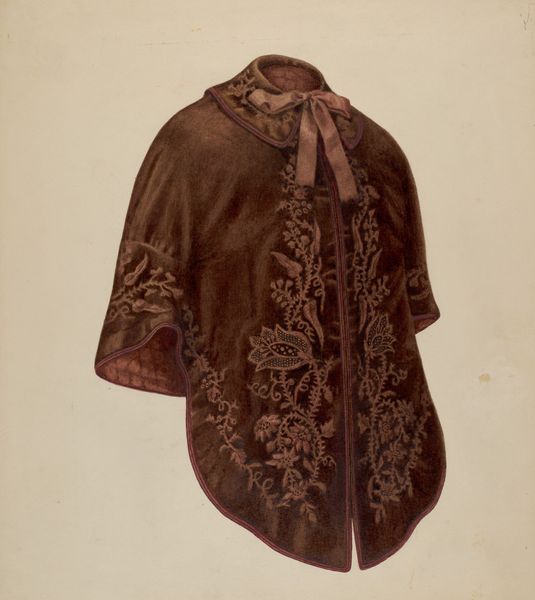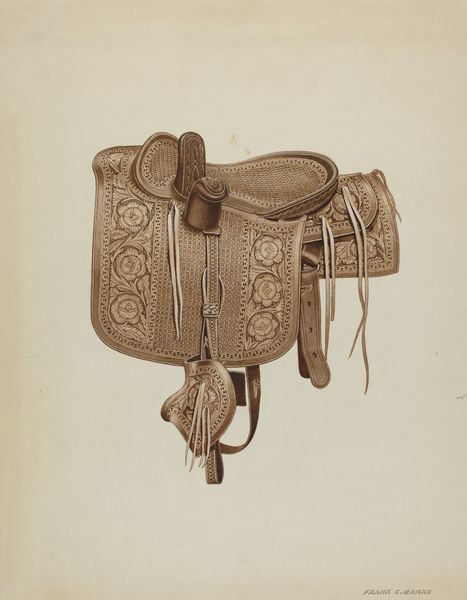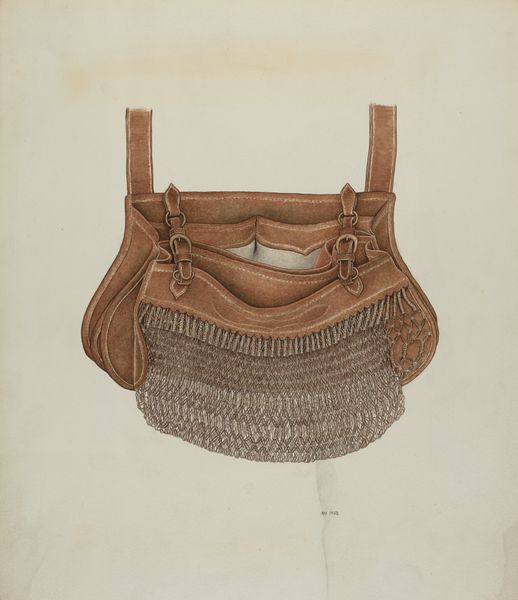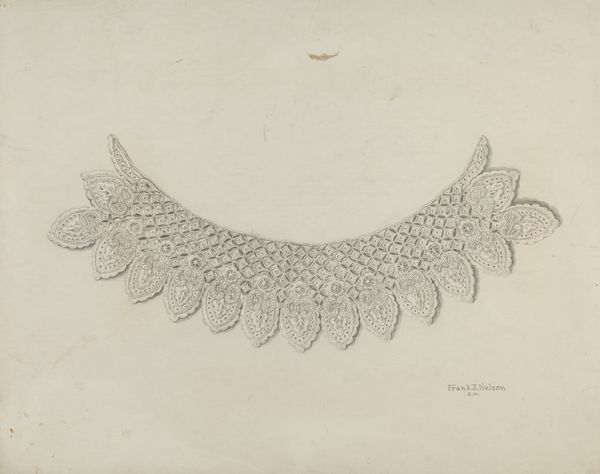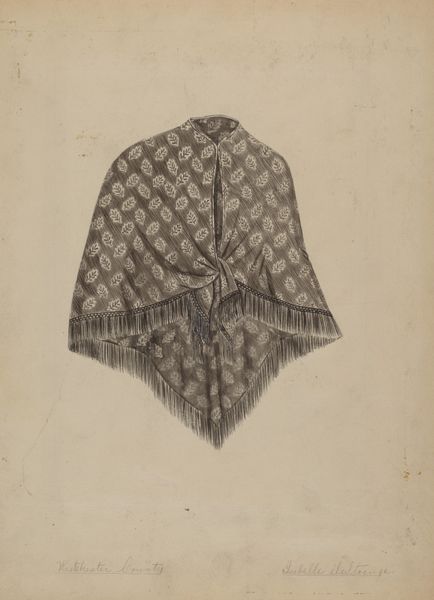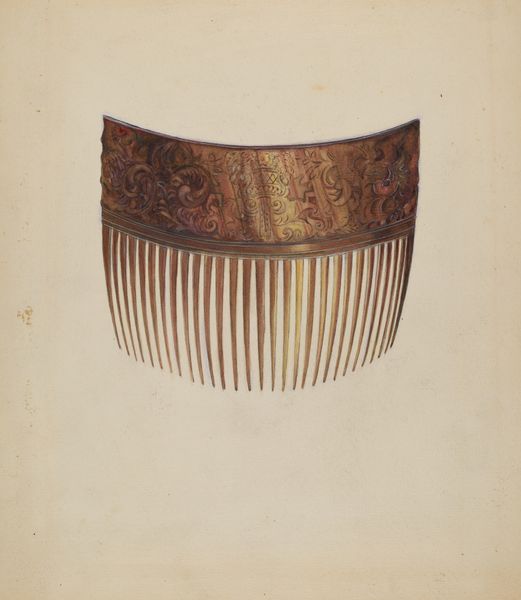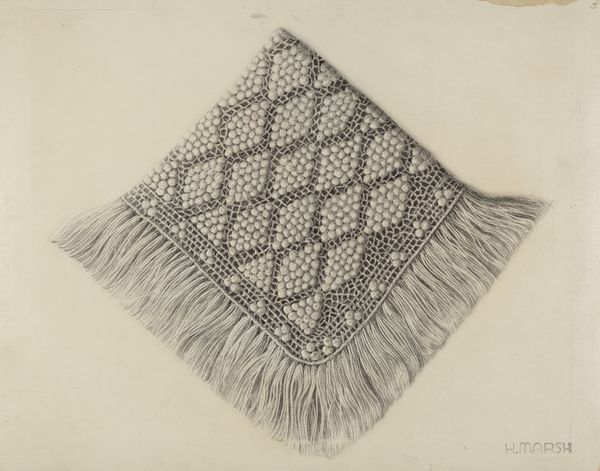
drawing, paper, pencil
#
drawing
#
paper
#
pencil
#
academic-art
#
realism
Dimensions: overall: 22.7 x 29.7 cm (8 15/16 x 11 11/16 in.)
Copyright: National Gallery of Art: CC0 1.0
Curator: Let’s turn our attention to "Shawl," a pencil drawing on paper created around 1936 by Isabelle De Strange. What strikes you first about this work? Editor: Well, the sheer darkness, for one. It almost feels like a mourning veil, a heavy shroud. But then you notice the intricate floral embroidery. Is it meant to be comforting, or a reminder of something lost? Curator: Interesting. For me, the fascination lies in its construction. It’s a study of a textile, carefully rendered in pencil to capture the fall of the fabric, the texture of the fringe. Notice how the artist meticulously recreates the decorative pattern? It is as much a record of technique, a dedication to the material culture of the time. Editor: True, but those patterns aren’t arbitrary, are they? They likely carry coded meanings. Floral motifs, especially in mourning garments, have specific associations. The repetition itself could suggest cyclical themes, grief that returns in waves. This isn't just any textile; it's a charged object. Curator: It makes me think about the labor involved – both in creating the original shawl, perhaps through complex weaving or embroidery techniques passed down through generations, and in its depiction by the artist using accessible materials like pencil and paper. De Strange captured the materiality of luxury, even when translating it into simple materials. Editor: Yes, and luxury can be a powerful symbol. This shawl could signify status, cultural identity, a whole host of social signifiers. What about the added sketches to the left and the lower-right of the drawing? These may depict a different vision of the design but certainly amplify the image's iconographic presence, highlighting various symbolic possibilities for the viewer. Curator: I am very drawn to that too, those are clearly preparatory studies, offering insights into the artistic process behind capturing the details on the shawls. They show how the final, "finished" study evolved over time as De Strange tested forms. Editor: In the end, this artwork invites you to meditate on beauty, skill, and loss, reminding us how personal adornment connects us to larger narratives. Curator: It speaks of craft and technique, and through this work on paper it prompts us to reconsider the humble, but impactful power in our everyday lives.
Comments
No comments
Be the first to comment and join the conversation on the ultimate creative platform.

